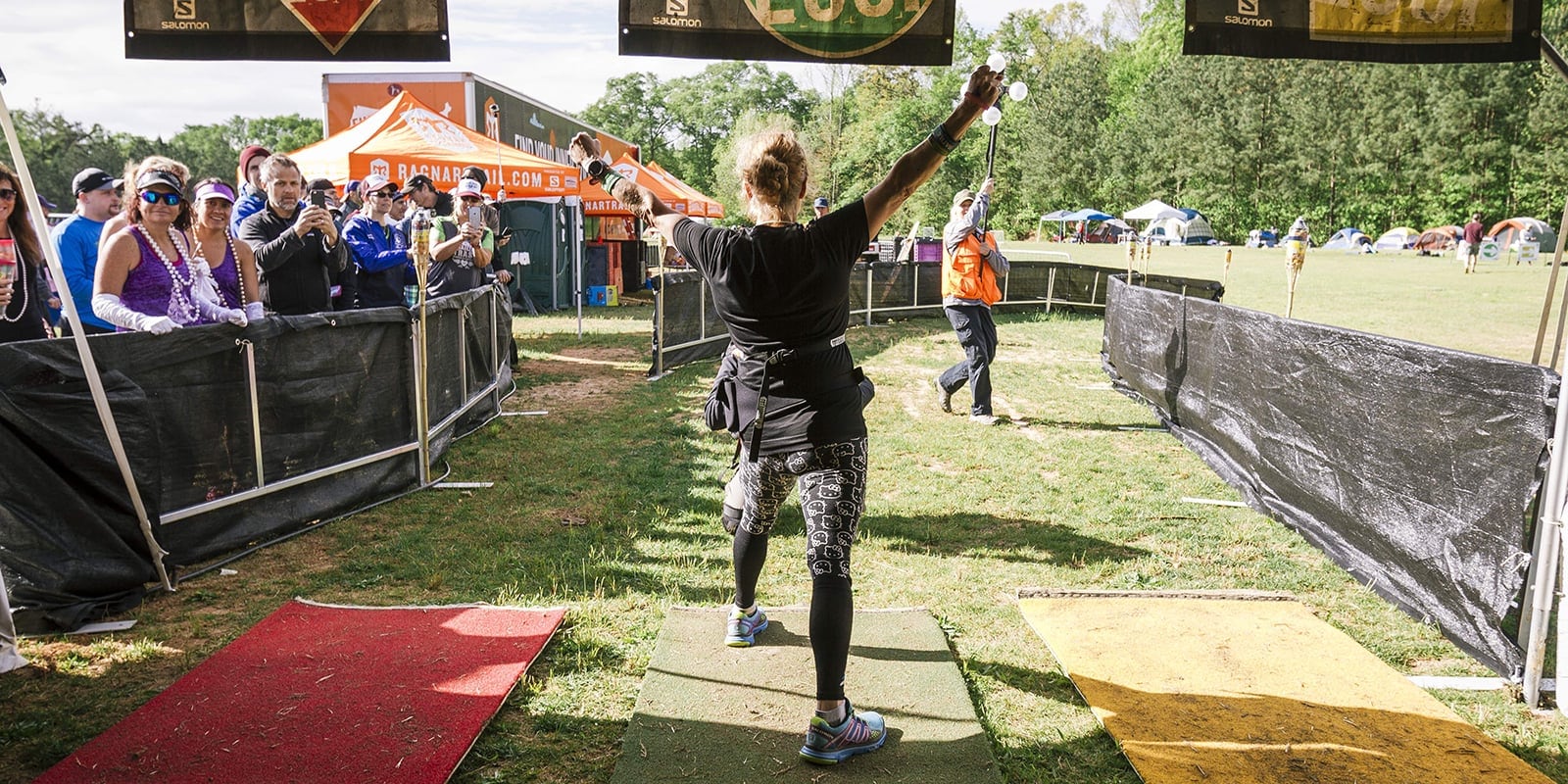If you enjoy a physical challenge, being part of an unconventional team and camping out in spectacular outdoor places, then you've either already signed up for a Ragnar event or you're someone who should seriously consider it.
Below is an overview and training primer to help you prep for a trail-running or road-running event. Many REI stores will also have Ragnar gear-up events where you can learn more. Check with your local REI store to see if they are hosting a Ragnar event and to find out if they have any Ragnar classes and training sessions available.
For some fundamentals about the sport of trail running, you can also check out REI's article on Trail Running Basics.
Ragnar Trail Basics
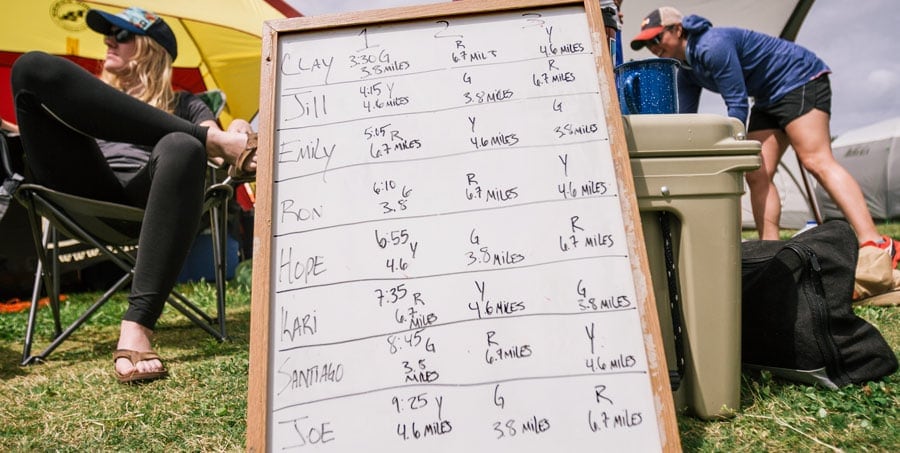
What is Ragnar? Named after a legendary Viking king, Ragnar describes itself as "the overnight running relay race that makes testing your limits a team sport." It started as a road-running event and Ragnar Trail is its trail-running evolution.
What's the format? Unlike the original point-to-point format, Ragnar Trail is centered around Ragnar Village, a kind of a festival camp in the wild.
A typical team consists of eight members, each running three loop trails of varying difficulty and distances. The loops start and end at the Ragnar Village and each runner runs all three loop trails. As one of those runners, you'll be looking at hundreds of feet of elevation change and 15 or more miles altogether within about a 24-hour period.
Getting on a team: You can get the full rundown and sign up your team on the Ragnar website. If you're looking for runners to fill out a team, or for a team to join, you have some options. Individual events in the nationwide Ragnar Trail series have links to Facebook pages that can help with those connections.
Ragnar Trail Training Schedule
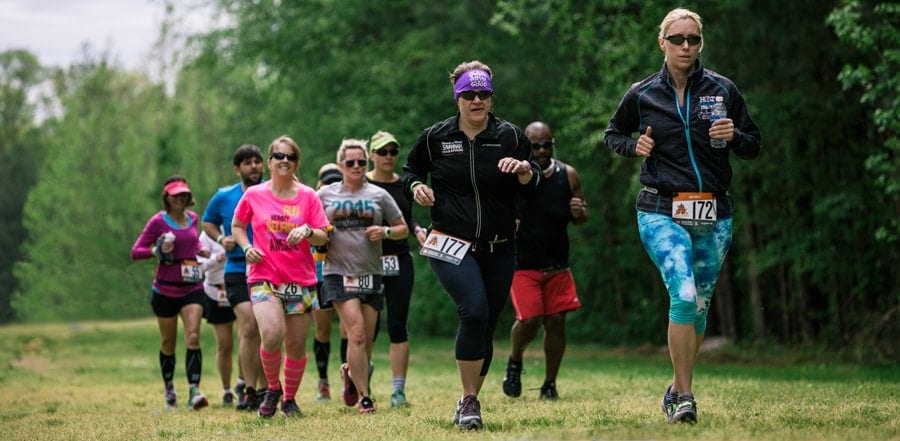
For a comprehensive approach to your training, REI and Ragnar suggest you follow a 12-week program:
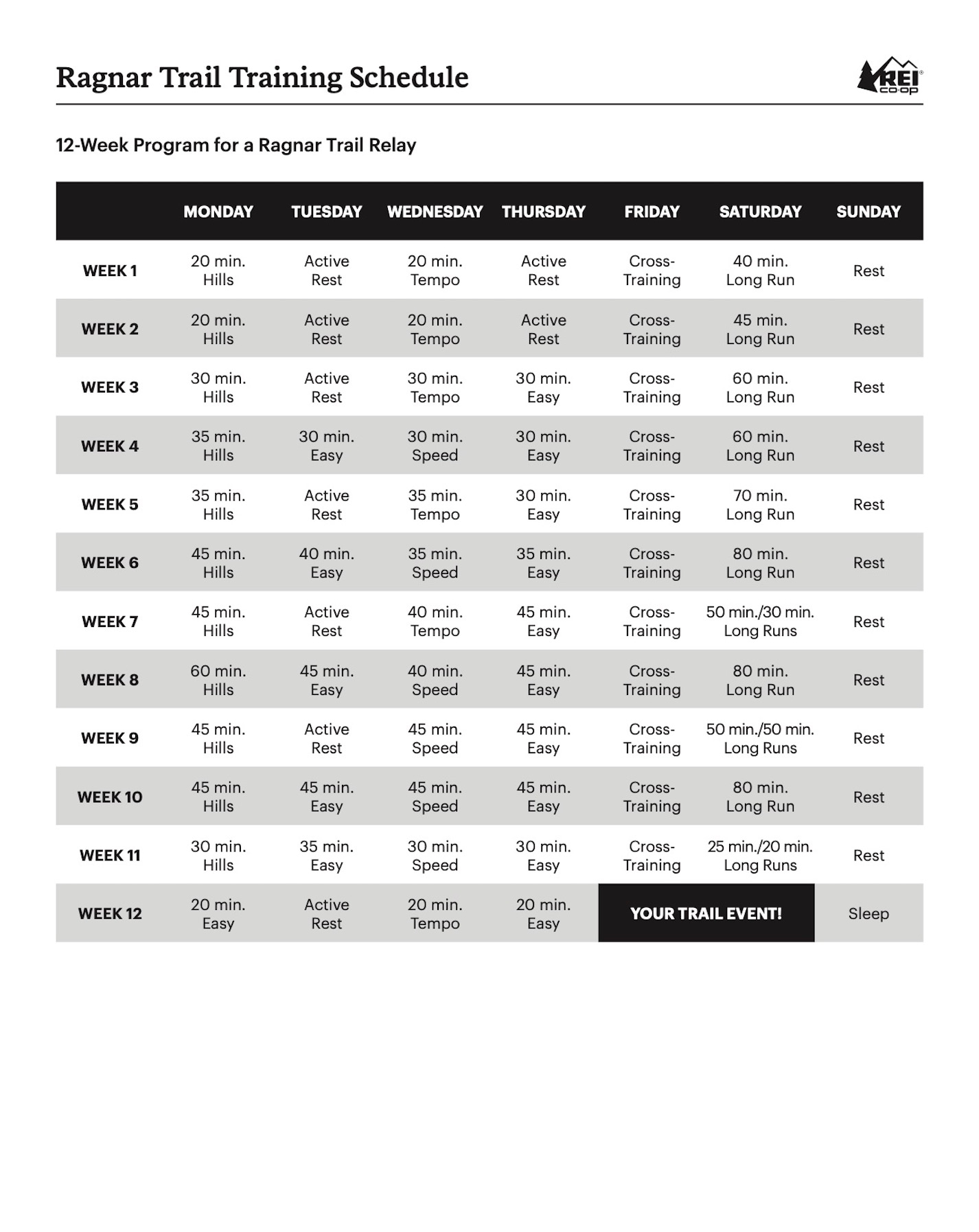
Printer-friendly version (PDF)
You can use this calendar as a starting point, modifying it based on your experience and needs. Your weeks should start easy, gradually become harder and then become easier for the last couple of weeks. As with all training programs, consult your physician before you start.
![]()
Hills: Depending on the course for your Ragnar event, at least one leg will require an elevation change of anywhere from a few hundred to more than a thousand feet. In addition to getting your muscles ready for the burn, you'll also want to hone your ascending and descending technique.
Repetition helps you improve your technique and hone your cadence for your fitness level. Hill training builds muscle and increases your lactate threshold. Your hill-training runs should progress from 20-minute sessions up to 60-minute sessions, then back down to 20 minutes the week of Ragnar.
![]()
Tempo run: Run 5 minutes at your "tempo pace": You're only able to utter single words. Follow this with 3 minutes of jogging.
Repeat this sequence until total tempo-pace time reaches the daily goal (don't include jogging time). For example: Do 6 of these sequences on a 30-minute tempo day.
![]()
Easy run: The goal is to stay active as you build your cardiovascular base miles. Easy runs are the foundation of any good training program. Slip in a run between your other responsibilities. Make it social to help you stay motivated.
These runs should be at a pace where you can easily carry on a conversation. Focus on time rather than distance, progressing from 30-minute runs up to 45-minute runs, then back down to a 20-minute run the week of Ragnar.
![]()
Speed run: Run 3 minutes at your "speed" pace: You can't really talk at all. Jog for 3 minutes. Run for 2 minutes at your speed pace, followed by 2 minutes of jogging.
Repeat this sequence until total speed-pace time reaches the daily goal (don't include your jogging time). For example: Do 4 of these sets on a 20-minute speed day.
![]()
Cross-training: The purpose is to increase the fitness of muscles that support the primary running muscles. It allows you to focus on nuances of trail running including proprioception—an awareness of your own body position. Plus, you get a break from running's repetitive motion. Include a core workout, plus resistance and strength training.
![]()
Long runs and twice-a-day running: These runs stretch the limits of your base miles and develop your aerobic endurance. Get out and explore new trails and focus on honing your running mechanics rather than racing. Maintaining a consistent heart rate over the course of your long runs is a great indication of fitness. You may want to invest in a heart rate monitor.
Focus on time rather than distance, progressing from 40-minute runs up to 100 minutes of running, then back down to 45 minutes of running the week before Ragnar.
At Ragnar you'll be running three legs within a 24-hour period, so you need to acclimate your body to recover quickly. Thus you want to include several twice-a-day runs into these training days, with most of those coming in the final weeks of training.
![]()
Active rest: Do any activity that keeps your body and muscles moving without taxing your cardiovascular fitness or recovery process. That includes activities like light walking, passive yoga poses or a stretching/foam-rolling session. Active rest days help prevent soreness and reduce the likelihood of injury.
![]()
Rest: The goal on these days is to give your body a break. Rest days are critical to avoid overuse injuries. Passive yoga sessions are fine for these days, though.
Additional Ragnar Tips
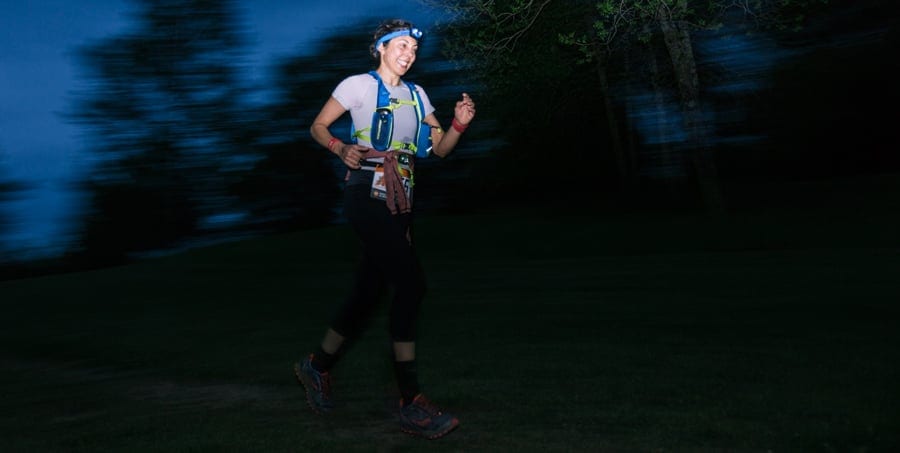
Practice Night Running
At least one, and usually two, of your race legs will be at dawn, dusk or in total darkness, so you need to be comfortable running at night. You'll also need a headlamp that's up to the challenge: Ragnar requires lighting with a minimum brightness of 70 lumens.
REI's Expert Advice article on how to choose headlamps can help.
Some runners prefer handheld flashlights to headlamps. Handhelds can also make it easier to see the trail if it rains on race day. Be sure you get a model that straps to your hand.
Bone Up on Your Camping Skills
If you're a runner but not (yet) a camper, check out our article on Festival Camping: Tips for Planning and Choosing Gear. You can also find dozens more camping-related articles online and classes in stores, ranging from how to choose a tent to how to make a gourmet cup of coffee.
Related Articles
